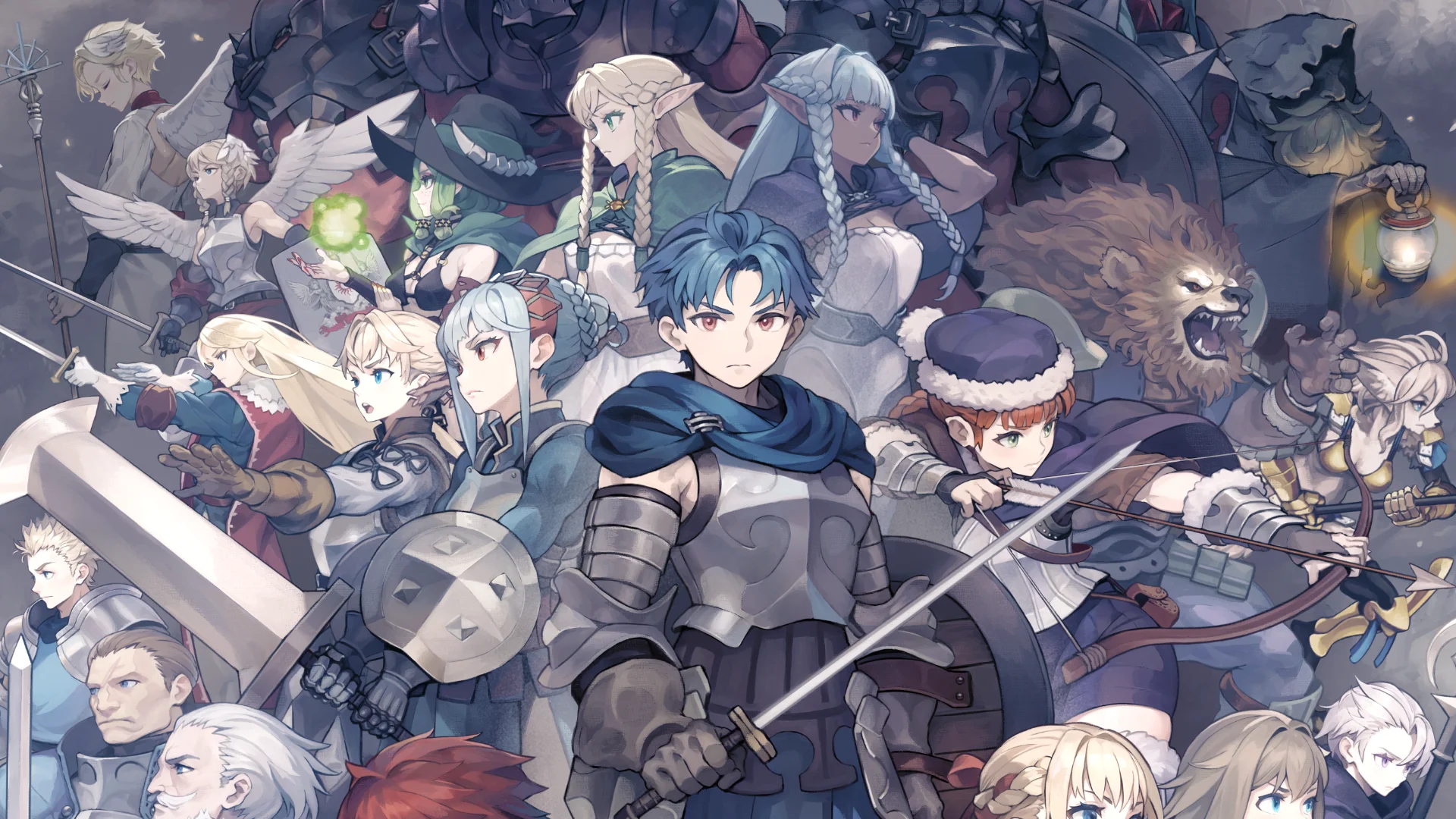Since the release of Odin Sphere on the PS2, I always look forward to the next Vanillaware game. Their unique art style and great gameplay that mixes the old with the new always results in an enjoyable experience. Moving forward to 2019, 13 Sentinels: Aegis Rim was quickly one of my favorite games of the year. When Atlus announced Unicorn Overlord in September, I was even more interested as I thought the tactical combat sections of 13 Sentinels were fantastic but few and far between. After playing only a tiny portion of Unicorn Overlord, I found the strategy gameplay robust and absolutely wonderful, and I loved every second of it.
Thanks to the lovely people at Atlus, I had the chance to sit down and play the first couple of hours of Unicorn Overlord. While I won’t get into any story spoilers in this preview, the basic introduction is that you play as Alain, prince of Cornia and son of Queen Ilenia. When her kingdom falls to the rogue General Valmore, Alain must travel the world to gather an army and reclaim his homeland. With you is a group of loyal friends and vassals to aid you as you discover the secrets behind General Valmore’s betrayal and Alain’s mysterious birthright, the Unicorn Ring. It’s a pretty simple and solid setup for any story, but I can assure you there is more under the hood here for players to discover. What I can go into depth about is the combat and gameplay systems of Unicorn Overlord.

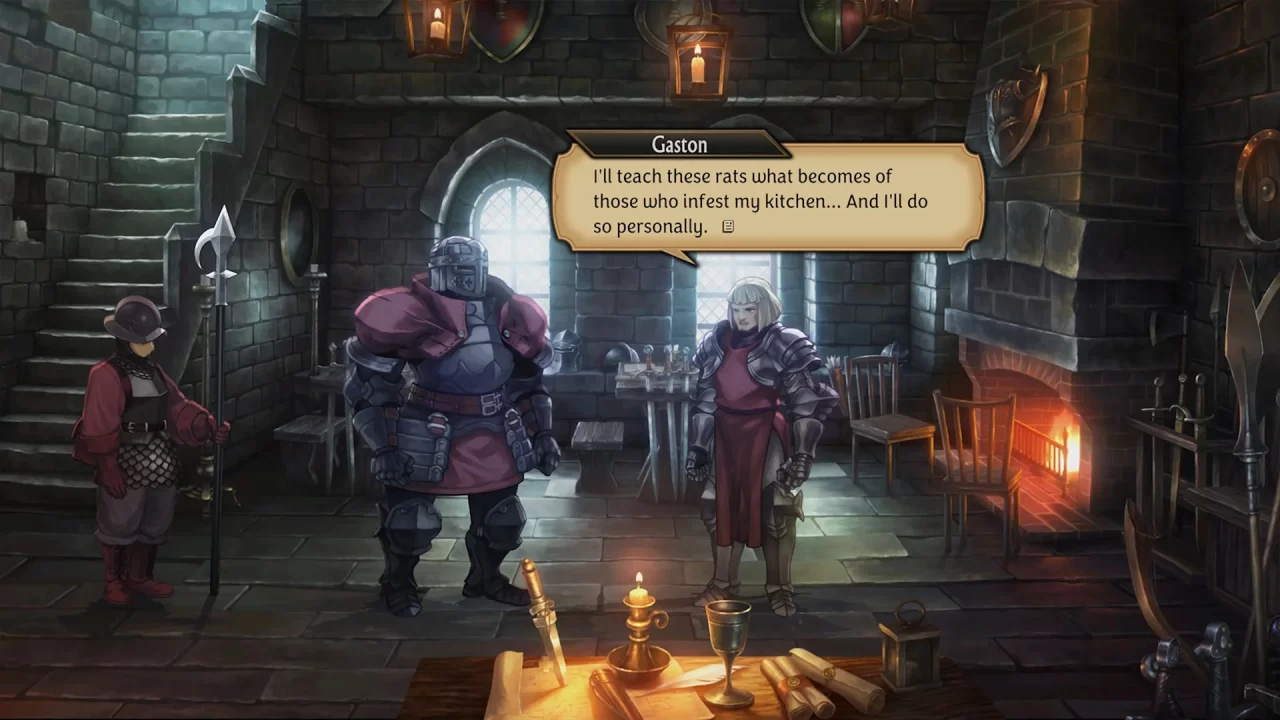

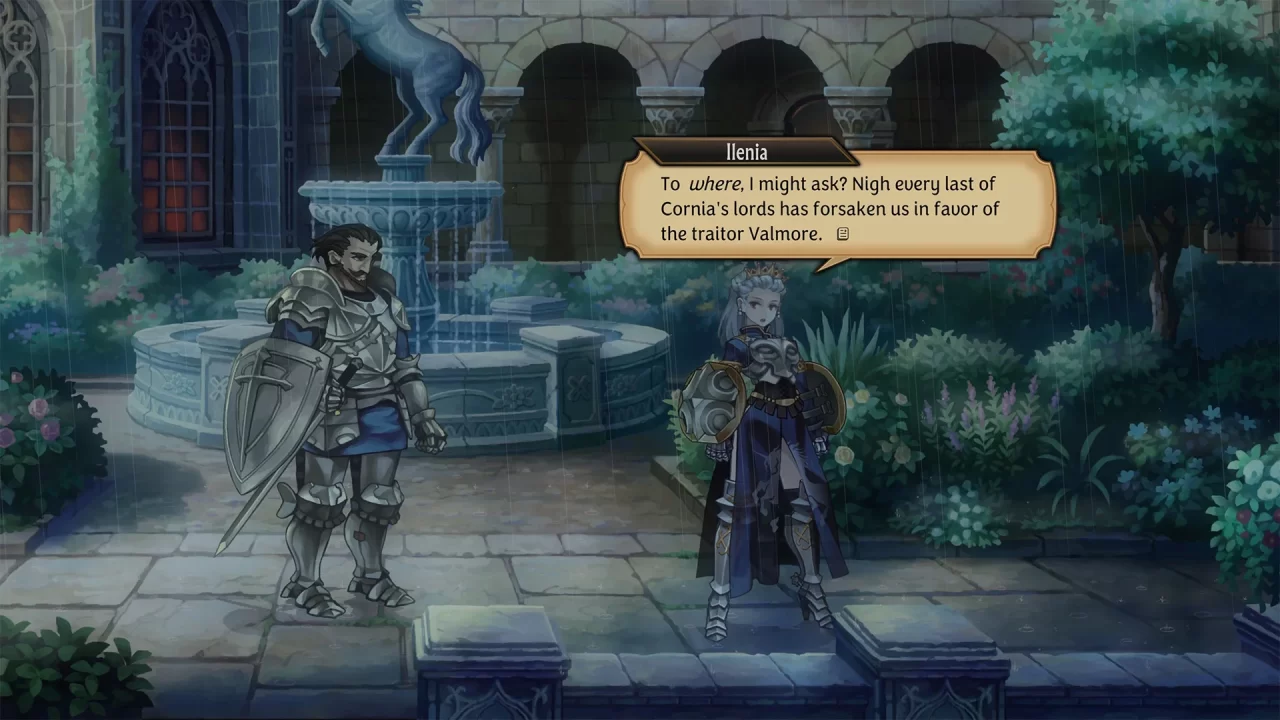
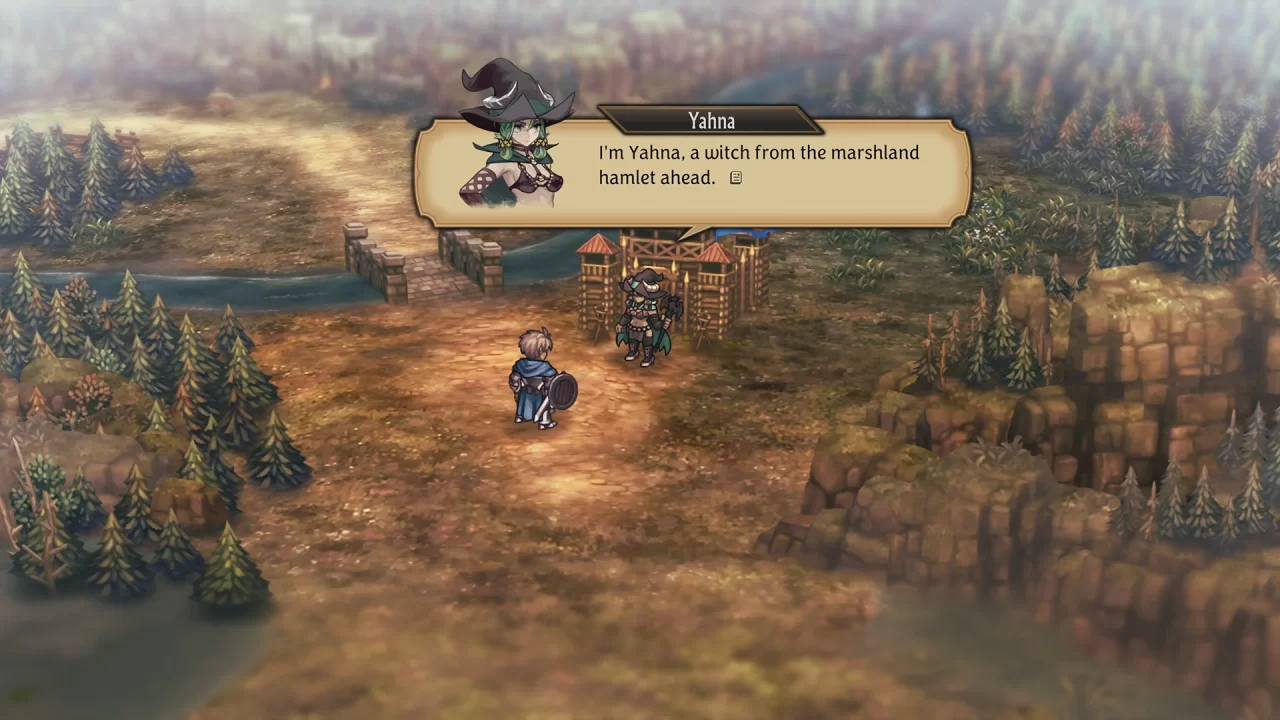
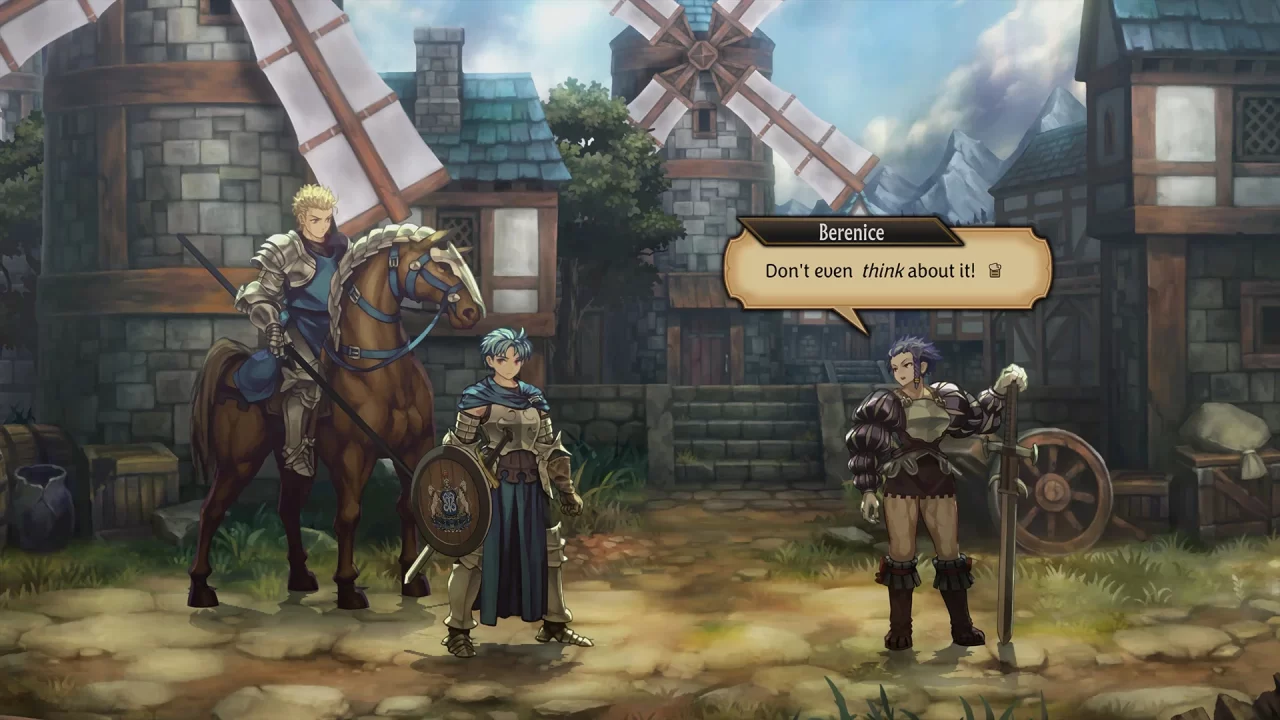
Unicorn Overlord‘s Strategic Combat
Have you ever played a Fire Emblem game and wished there was more to it than just one-on-one fights between units in a game that is supposed to simulate a war? Well, Unicorn Overlord has you covered. The strategy combat of Vanillaware’s latest is a fun mix of Ogre Battle and Fire Emblem with a sprinkle of Final Fantasy XII‘s gambit system thrown in for added measure. To start, every character is organized into class types such as infantry, cavalry, flying, scout, etc. From there, they are subdivided again into classes such as Solider, Housecarl, Paladin, Gryphon Knight, and more. You place your characters (of any combination) into units comprised of a 2×3 grid. For example, you can pair Alain with his childhood friends Lex and Scarlett to create a unit with Alain tanking hits in the front and recovering damage with his self-healing Lean Edge skill, while Lex safely deals damage from the back row. All the while, Scarlett can heal any damage that Alain can’t self-heal and throw out spells to guarantee hits against more nimble opponents like thieves. You want to ensure each unit can deal with different types of threats since there is a Fire Emblem-like triangle system where infantry units are weak to cavalry units, who in turn are vulnerable to flying, etc. It’s less cut and dry than Fire Emblem’s triangle system, which can add spice to the combat.
A character’s placement on the grid and who to choose as a leader will also affect things such as who gets hit with specific attacks. For example, placing Alain with Scarlett right behind him will have Alain block most attacks for Scarlett, but enemy spear users will strike through both of them. So, to prevent this, you can space them apart diagonally. Selecting a leader for a unit plays a significant role as well. If you were to place Alain with Clive, a cavalry unit, and then choose Clive as the unit’s leader instead of Alain, then the unit will have the advantage of faster field movement speed, allowing them to engage targets faster or retreat quicker. On the flip side, choosing Alain as the leader of this unit grants the Morale Boost effect, which increases the amount of Valor you earn through battle actions. As you can see, there is a high degree of customization options in what I played, and this was only the start of the game.
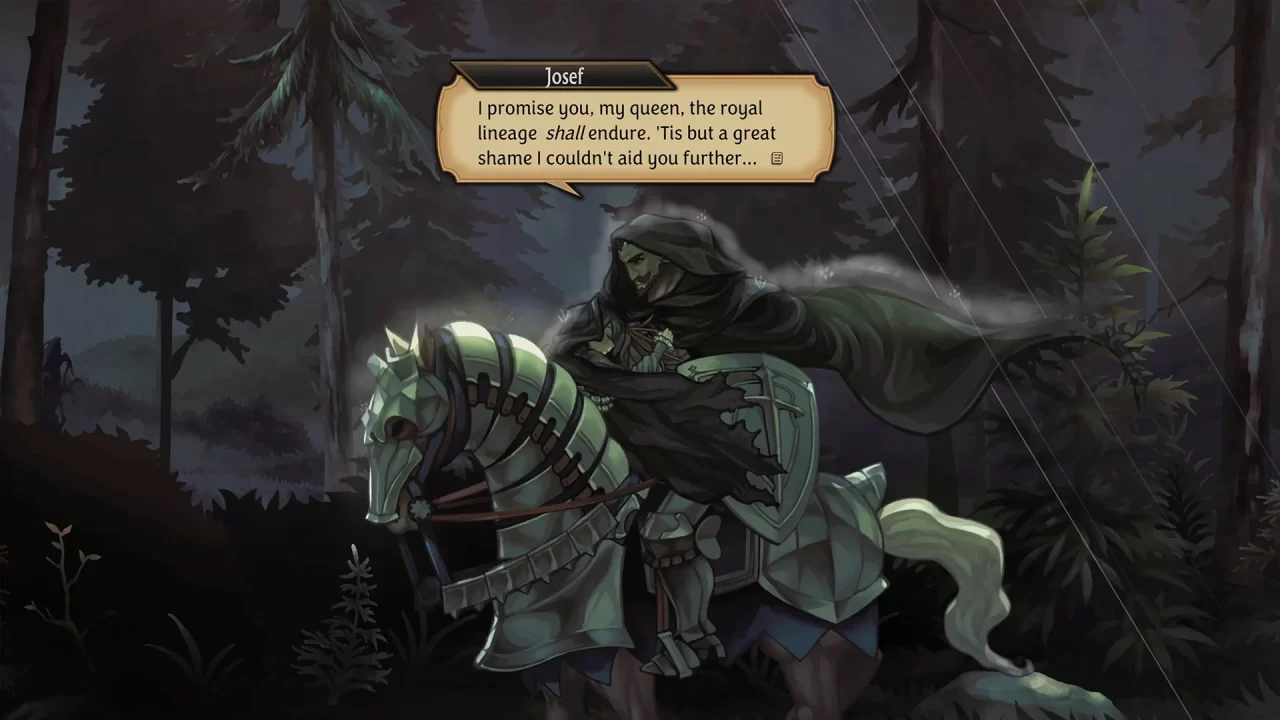
As for the battles themselves, they play out somewhat automatically when an enemy engages your units. Each character has a set of Action Points (AP) and Passive Points (PP) they will use in an engagement. AP is used for attacking abilities, while PP is used in skills such as healing or covering damage for characters. When I say the battles are “somewhat” automatic, I’m referring to an excellent little customization option, which allows you to prioritize which skills and spells a character will use and who to use them against. Again, using Alain as an example, you can adjust his use of the Lean Edge skill to first target enemies with low HP to eliminate threats. Another example is having a spear unit target enemies in columns (stacked behind each other) first and foremost to use their unique piercing attacks. As you can see, it is very similar to Final Fantasy XII‘s gambit system. If that wasn’t enough strategy gameplay to go around, wait, there’s more!
The combat field itself is also part of the strategy for each battle in Unicorn Overlord, and I don’t mean just choosing which way to go or which enemy units to fight. Every unit has a set number of actions they can take before they must fall back and rest. In my demo, that number seemed to be five, but I expect that number may increase further into the game. Regardless of how strong a unit may be, they are vulnerable if they are resting, so strategic use of multiple units is essential to avoid this.
The other neat thing Unicorn Overlord brings to the table is each unit’s field abilities, which are castable by using Valor points. You’ll earn Valor points for performing different actions, such as fighting or garrisoning a unit at a location. They are mainly used for deploying new units from your base and for those field abilities. One such ability is Alain’s First Strike command, which allows all nearby units to strike first, regardless of the enemy’s unit type. Another ability allows a unit to increase another unit’s speed on the field, a must for those not led by a cavalry character.
Overall, there is a lot to play with here, which may be overwhelming for some players. But thankfully, you are covered in this department as well. Multiple difficulties are available for anyone needing help with these systems. Playability for all is a plus in my book, especially for strategy games, since many people will bounce off them once it becomes too much to deal with.
Explore the World
Of course, Unicorn Overlord has more to do outside of combat. After each story sequence, you can roam an actual world map. Unlike many tactical RPGs where you point and click on the next spot to do battle, you can freely wander the world of Unicorn Overlord to explore different areas, take on side missions to gain new allies, or shop at towns for new equipment. You can also recruit generic soldiers or participate in mock battles to strengthen your army for the next mission.
One of the neat little bonuses of unit creation is putting characters together in a unit and using the unit to increase their rapport with each other. As it rises, there will be additional scenes to discover on the world map that involve these characters. Also, as you do side missions, you expand your territory and open up new places to explore and find items in the field. Sometimes, the following primary quest battle is gated in a faraway territory, so you must choose the route to go there. You could go north through a wizard’s domain and do battle with them to gain access to a bridge, or go south to liberate a city under attack by bandits. It really gives you the feeling that with each main and side mission, you are expanding your army’s territory like a real war would play out. This system is one thing that sets Unicorn Overlord apart from many other tactical RPGs. It’s a trend I hope to see continue in the genre moving forward.
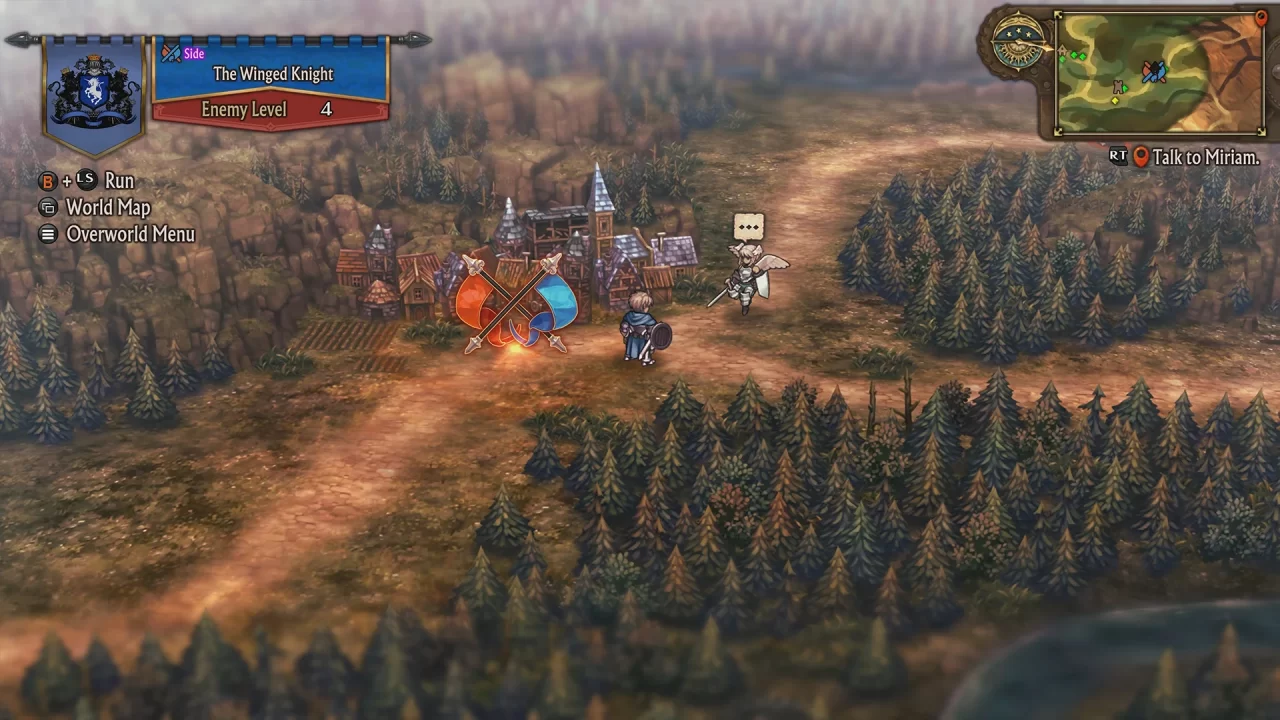
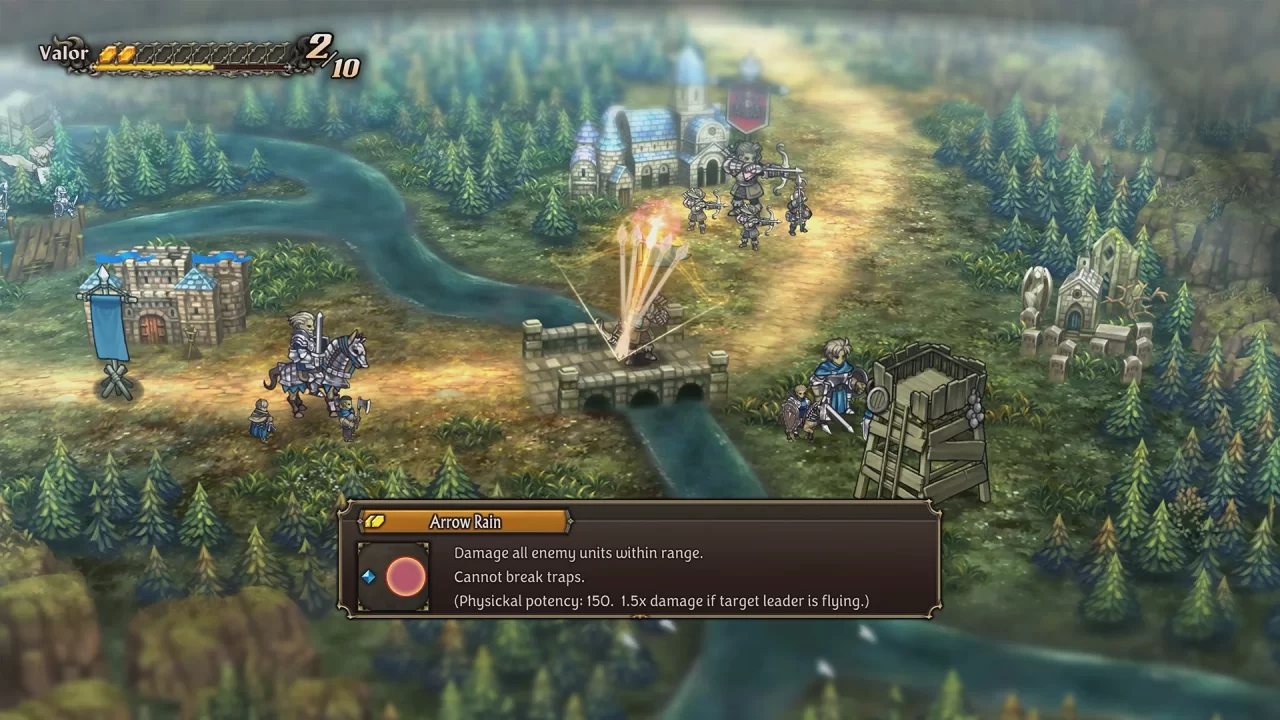

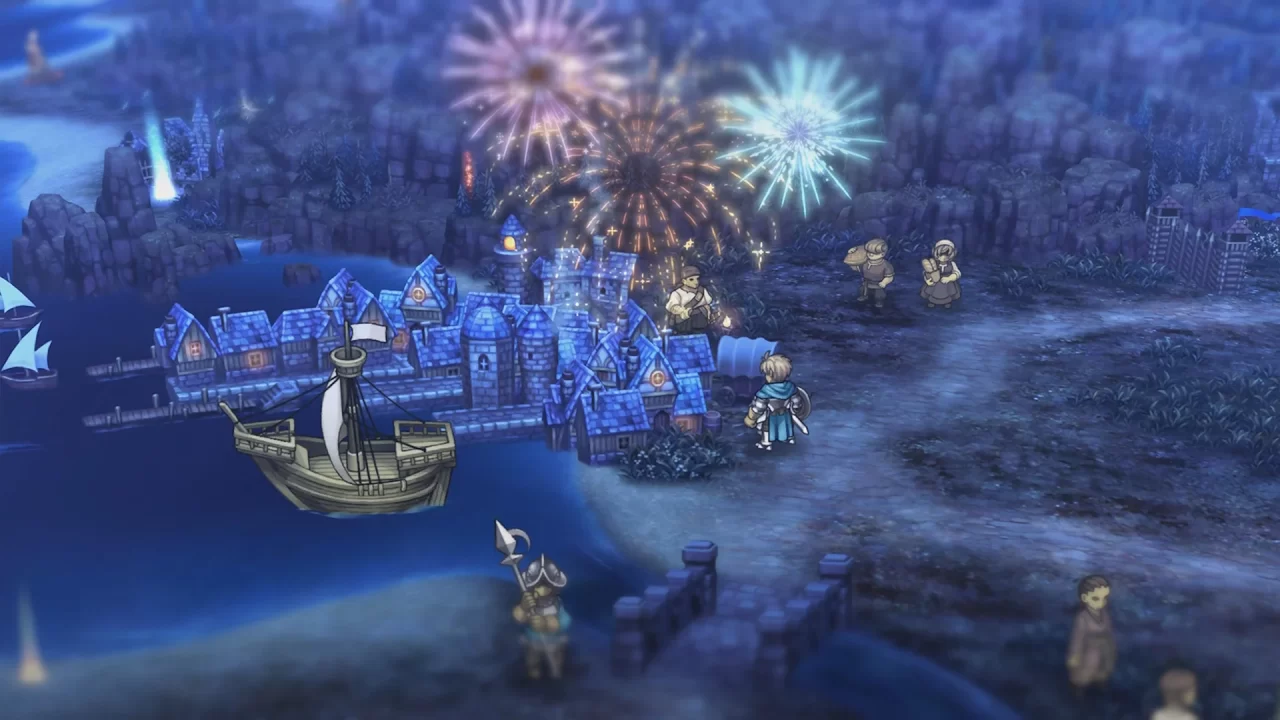
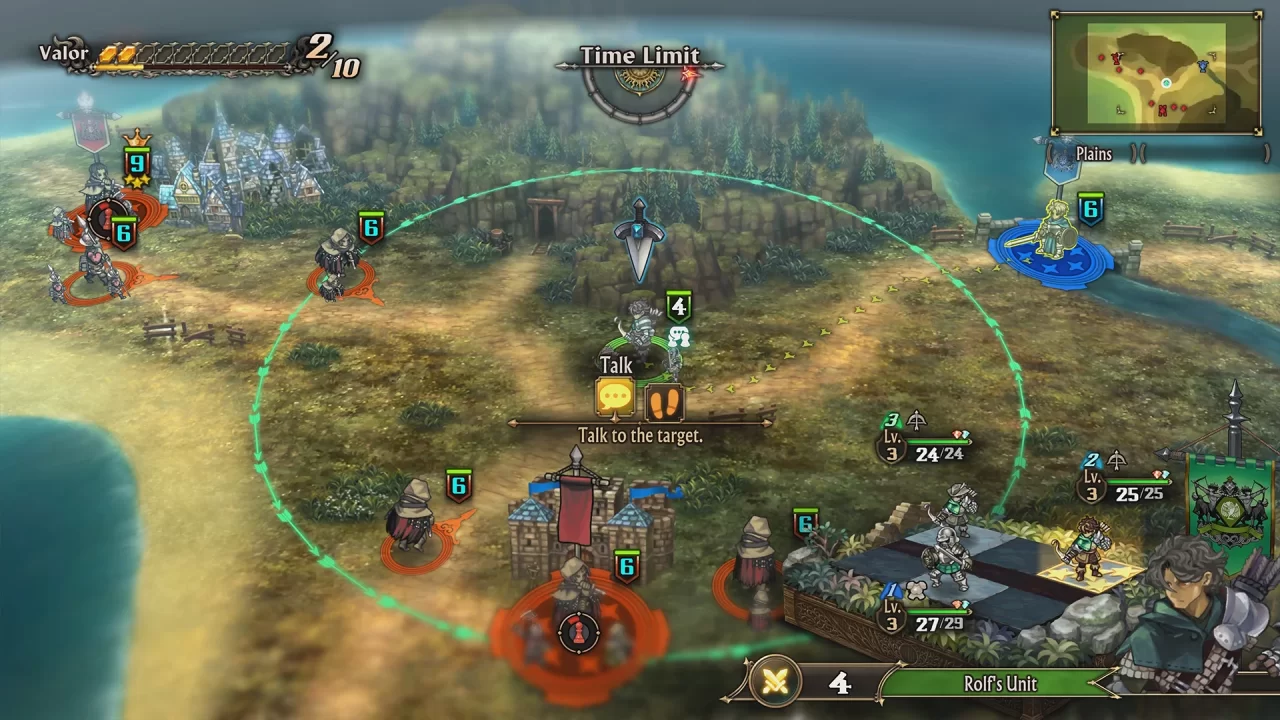

There is a lot to unpack with Unicorn Overlord, and I am totally ready for it. I loved my time with this demo, and it sold me (more) on a game that I was already sold on, so that says a lot. Leave it to Vanillaware to take a classic experience and improve it. You can get your hands on the game when it releases on March 8th for PS4, PS5, Switch, and Xbox Series X|S. Learn more at the game’s official website, and stay tuned to RPGFan for more coverage of Unicorn Overlord leading up to its release!

